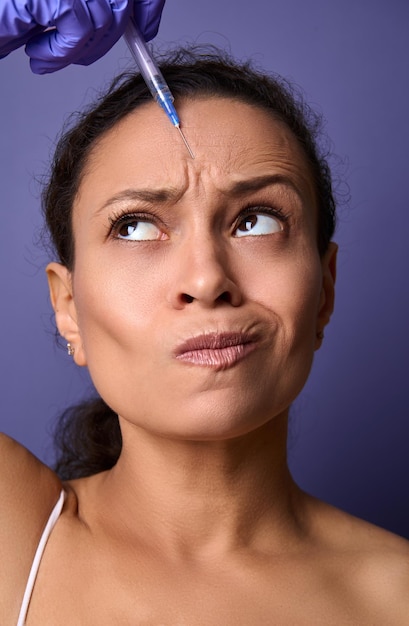Understanding Rosacea: Identifying the Symptoms and Triggers

Strong 8k brings an ultra-HD IPTV experience to your living room and your pocket.
Rosacea treatment in Dubai has gained attention as more individuals seek effective solutions for managing this common skin condition. Rosacea is characterized by redness, visible blood vessels, and other symptoms that can significantly impact a person's quality of life. Understanding Rosacea Treatment in Dubai, including how to identify its symptoms and triggers, is essential for effective management and treatment.
What Is Rosacea?
Overview of Rosacea
Rosacea is a chronic inflammatory skin condition that primarily affects the face. It typically begins with episodes of flushing or redness, which can progress to more persistent symptoms. Although anyone can develop rosacea, it is more common in fair-skinned individuals and often manifests in adulthood.
Types of Rosacea
There are several subtypes of rosacea, each presenting different symptoms:
Erythematotelangiectatic Rosacea:
This type is marked by persistent facial redness and visible blood vessels. Individuals may notice frequent flushing, especially when exposed to triggers.
Papulopustular Rosacea:
This form resembles acne, characterized by red bumps and pustules. It can cause discomfort and often occurs alongside facial redness.
Phymatous Rosacea:
Less common, this subtype involves thickening of the skin, particularly on the nose, resulting in a bumpy or bulbous appearance.
Ocular Rosacea:
This variant affects the eyes and eyelids, leading to symptoms such as redness, irritation, and swelling. It is essential to address ocular rosacea promptly to prevent complications.
Identifying the Symptoms of Rosacea
Common Symptoms
Recognizing the symptoms of rosacea is the first step toward effective treatment. Key symptoms to watch for include:
Facial Redness:
Persistent redness in the central part of the face is often the most noticeable symptom. It may resemble a sunburn.
Flushing:
Episodes of flushing can occur, triggered by various factors, and may last for a short duration.
Visible Blood Vessels:
Small, dilated blood vessels (telangiectasia) may become visible on the surface of the skin.
Bumps and Pimples: Red, inflamed bumps may appear, sometimes filled with pus. These can be mistaken for acne.
Thickened Skin:
In advanced cases, particularly with phymatous rosacea, the skin can become thick and have a bumpy texture.
Eye Symptoms:
Ocular rosacea can cause redness and irritation in the eyes, along with a gritty sensation.
When to Seek Medical Help
If you notice persistent redness or any of the symptoms mentioned, it’s essential to consult a dermatologist. Early diagnosis and treatment can help prevent the condition from worsening and improve your quality of life.
Triggers of Rosacea
Understanding the triggers of rosacea is crucial for managing the condition effectively. Triggers can vary from person to person, but some common ones include:
1. Environmental Factors
Sun Exposure: UV rays can exacerbate rosacea symptoms. It's important to use sunscreen daily to protect your skin.
Temperature Extremes:
Both hot and cold weather can trigger flushing and redness.
Wind:
Wind exposure can irritate the skin and provoke symptoms.
2. Lifestyle Factors
Stress:
Emotional stress is a common trigger for rosacea flare-ups. Managing stress through relaxation techniques can help.
Diet:
Certain foods and beverages, especially spicy foods, alcohol, and hot drinks, can lead to flare-ups for some individuals.
Skincare Products:
Harsh products, including those with fragrances or strong active ingredients, can irritate sensitive skin. It's advisable to choose gentle, hypoallergenic products.
3. Medical Conditions
Certain medical issues can worsen rosacea, including:
Hormonal Changes:
Fluctuations in hormones, particularly during menopause, can trigger symptoms in women.
Other Skin Conditions:
Individuals with conditions such as eczema or seborrheic dermatitis may find their rosacea symptoms worsen.
Managing Rosacea Symptoms
Skincare Routine
A proper skincare routine is vital for managing rosacea. Consider the following tips:
Gentle Cleansing:
Use a mild, non-irritating cleanser that won’t strip the skin of its natural oils.
Moisturizing:
Keeping the skin hydrated helps reduce irritation and redness. Look for moisturizers that are fragrance-free and designed for sensitive skin.
Sun Protection:
Applying a broad-spectrum sunscreen daily is essential for preventing sun-induced flare-ups.
Medical Treatments
For individuals with moderate to severe rosacea, medical treatments may be necessary. These include:
Topical Medications:
Prescription creams and gels can help reduce redness and inflammation. Common active ingredients include azelaic acid and metronidazole.
Oral Medications:
In more severe cases, oral antibiotics or other medications may be prescribed to control symptoms.
Laser Treatments:
Laser therapy has shown effectiveness in reducing redness and visible blood vessels. This can be particularly helpful for individuals with persistent flushing.
Lifestyle Changes
Stress Management Techniques
Since stress can exacerbate rosacea, incorporating stress management techniques can be beneficial. Activities such as yoga, meditation, and regular exercise can help reduce stress levels and improve overall well-being.
Dietary Adjustments
Keeping a food diary can help identify any dietary triggers. Consider reducing or eliminating foods that seem to provoke your symptoms. Common culprits include:
Spicy Foods:
Many people with rosacea find that spicy dishes trigger their symptoms.
Alcohol:
Alcohol, particularly red wine, is known to cause flushing in some individuals.
Hot Beverages:
Hot drinks can also lead to flushing, so consider drinking them at cooler temperatures.
Avoiding Known Triggers
Identifying and avoiding personal triggers is key to managing rosacea effectively. Keeping track of your symptoms and their potential triggers can help you develop a personalized management plan.
Conclusion
Understanding rosacea, including how to identify its symptoms and triggers, is essential for effective management. If you notice signs of rosacea, consult a dermatologist for a proper diagnosis and treatment options. By taking proactive steps—such as developing a suitable skincare routine, utilizing medical treatments, and making lifestyle adjustments—you can manage rosacea effectively.
As more people seek rosacea treatment in Dubai, it’s important to approach this condition with knowledge and care. With the right management strategies, you can reduce the impact of rosacea on your life and enjoy healthier, more comfortable skin.
Note: IndiBlogHub features both user-submitted and editorial content. We do not verify third-party contributions. Read our Disclaimer and Privacy Policyfor details.







